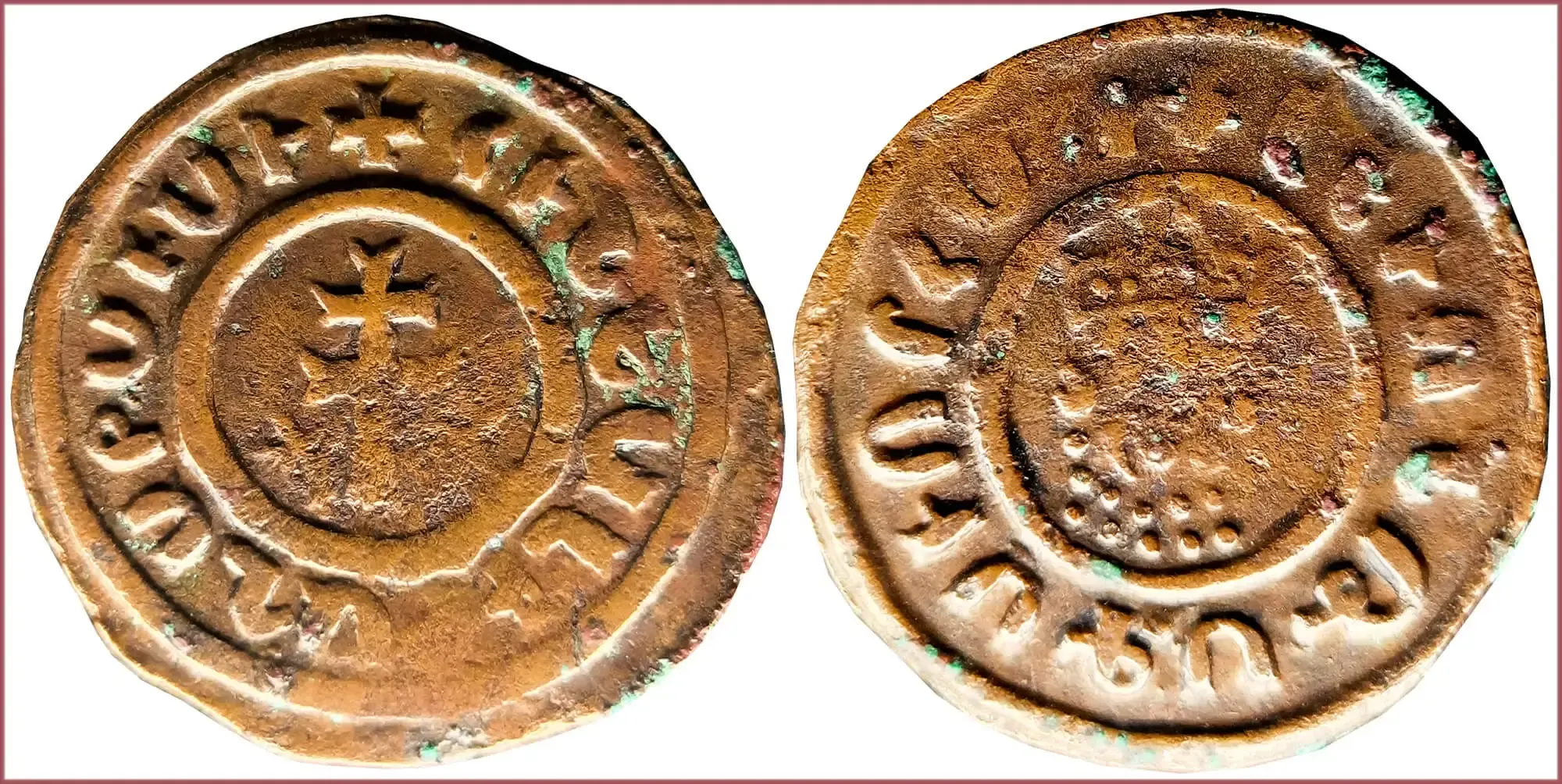TANK: COIN OF CILICIAN ARMENIA
Tank, 1198-1219: Armenian Kingdom of Cilicia
ND (no date).
Ruler: Leo II (Armenian "Լեւոն Ա Մեծագործ"; romanized "Levon I Metsagorts") — the 10th lord of Armenian Cilicia (1198-1219). He was the 1st Armenian king to be crowned (precisely as Leo I; also in history, in addition to Leo I King of Armenia /in fact, it is Leo II/ the famous Leo I Prince of Armenia, who ruled during 1129-1137). He succeeded in establishing Cilician Armenia as a powerful and unified Christian state. Under his rule, Armenian power in Cilicia was at its apogee.
ՇԻՆԵԱԼ Ի ՔԱՂԱՔՍ Ի ՍԻՍ: Struck in the city of Sis.
Patriarchal cross (heraldic figure — symbol of the Christian Church) and two stars.
ԼԵԻՈՆ ԹԱԳԱԻՈՐ ՀԱՅՈՑ: Levon (Leo) king of the Armenians.
Portrait of the monarch in the form of a lion with a crown.
- Copper: 29 mm - 6.86 g
- Reference price: 25$
COIN TANK — WHERE & WHEN (coins catalog: by names & emitents)
TANK as coin name.
Tank — large copper coin of the Armenian Kingdom of Cilicia (the so-called Cilician Armenia). It was issued from the last years of the 12th to the second half of the 13th century.
Analysis of the characteristics of the known specimens allows us to state that the weight of the tanks was between 6.5 and 7.5 grams.
In parallel with the tank, kardez was in circulation — also a copper coin, but with half the weight. It is logical to assume that the tank was equated to two kardez. In turn, there is information that 5 tank (or 10 kardez) were equivalent to one silver tram (main Armenian currency of that time).
Two types of this coin can be found in the collections of numismatists.
The first type dates from 1198-1219 and refers to the reign of the Armenian king Levon I (formally known in history as Levon II). This type of tank contained a portrait of a crowned ruler in the form of a lion and a patriarchal cross (double).
The second type is a copper coin of King Hethum I (1226-1270) of slightly lower weight compared to the previous Armenian tank. Plot: the king sits on a throne with his legs crossed; in his hands — a sceptre and a globus cruciger (attributes of the power of the monarch). On the other hand — the crutch cross or cross potent (heraldic symbol).
The legend on the tanks of both types was related: the name and title of the monarch, as well as data on the center of issue of the coin — the city of Sis (the Cilician capital; nowadays — Turkish city of Kozan).
The name of the tank coin echoes the related names of money of other countries and eras: tanka (medieval Indian sultanates), takka (also India), taka (Bangladesh), tangka (Tibet, Nepal).
The prevailing version is that all the listed terms literally mean "money" in translation (the origin is associated with the Hindustan peninsula).

